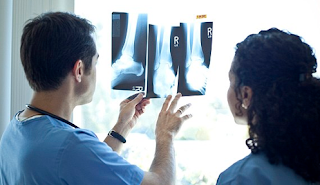The number of replacement surgery in India has increased in the past few years.
Due to the complication related to hip joints and knee joints patients are visiting
doctors for the replacement surgeries. Hip joint replacement becomes important in
case you suffer from arthritic hip or face an accident. In order get a long
lasting relief from the arthritic pain, patients usually go for hip replacement
surgeries. However, there is very little chance of error in this operation but
still as like any major surgery it has also certain risks. In the post, I am
going to discuss about the risks and the complications related to common hip replacement surgery in India that
patients must be aware off.
The complications can be divided into two
different categories such as general complications and specific complications. The
general complications are such as allergic
to the given medication, loss of
blood during transfusion, heart
attack, organ failure or nerve blocking etc. These are very
general complications, which are related with most of the major operations.
However, there are certain specific complications are related with the hip
replacement surgeries. These are discussed below.
Blood
clots: During or later the surgery it has been seen
that patient can come up with the complication of the blood clotting in deep
veins of leg that resulting into pain or swelling. If the clot will not be
cleared off, it can causes future complications also. In different ways, these
complications can be handled. Doctors can give medications or in case of
emergency can go for another operative process to get the clot out.
Pulmonary
embolism: Sometimes it happens that the clots of
blood passes through the veins and reach the lungs through the veins and can be
stuck. In such cases, the patient can be detected with breathlessness, chest
pain that may result into collapse. In order to get rid of these, doctors
prescribe blood thinning medicines or oxygen therapy.
Infection: Infection can happen at any major operations. In order to avoid the
infections operation theatres are especially equipped with systems that pump
fresh air within it. The infection in case of hip replacements can be dealt
with the medicines but the replaced joints have to be removed until that. After
an interval of 6 to 12 weeks, new hip components are being planted again.
Dislocation:
A study suggests that one in a 20 cases it has been
found that the artificial joint may get dislocated. In such cases, the patient
has to go through the operations again in order to put the joint back in the
position. In case, it is occurring for more than once, the patient may have to
gone through surgeries again or has to put and braces in order to stabilise the
joints. Thus in order to stay protected it is necessary that the patient must
not bend the joints more than 90 degree. It is also advised to them that not to
cross the legs more than the midline of the body.
Wear: It has been seen that people operated and replaced with the plastic
socket are facing the problem of inflammation and the worn plastic eat away
hipbones. In order to get rid of the problem people are more often prone to the
ceramic on ceramic or metal on metal joints. The reason is that these joints
are wear less. However, it comes with the risk as metal on metal joints
releases metal ions, which can have other adverse effects on the bones. Advanced
hard wearing plastics are also developed and used in order avoid this risk.
Inequality
in leg length: Due to the artificial replacement
sometime, an inequality of leg length is recorded within the patients after
operation. However, doctors take ample precautions in order to avoid the
problem. Due to the muscle weakness it is also been found that the height of
the leg gets unequal. However, in order to resolve the issue a shoe raise is
necessary in the shorter part.
Loosen
replacement: One of the common causes of the
failure of hip replacement is found due to the loosen up of the artificial
replacement. However, it can occur at any point of time but generally, it has
been seen to occur after the 10 or 15 years of the operation. In case the bone
got thinner, the artificial joint may get loosen. In these cases, the only
option is to undergo the surgery again in order to fix the problem.
In order to conclude I can say that surgery
at any age is not a pleasant experience for anybody. However, at some point of
time we have to choose between living a normal life and life in a
incapacitating conditions. Therefore, we have to choose the surgical process in
order restore the normal functionalities our life.






